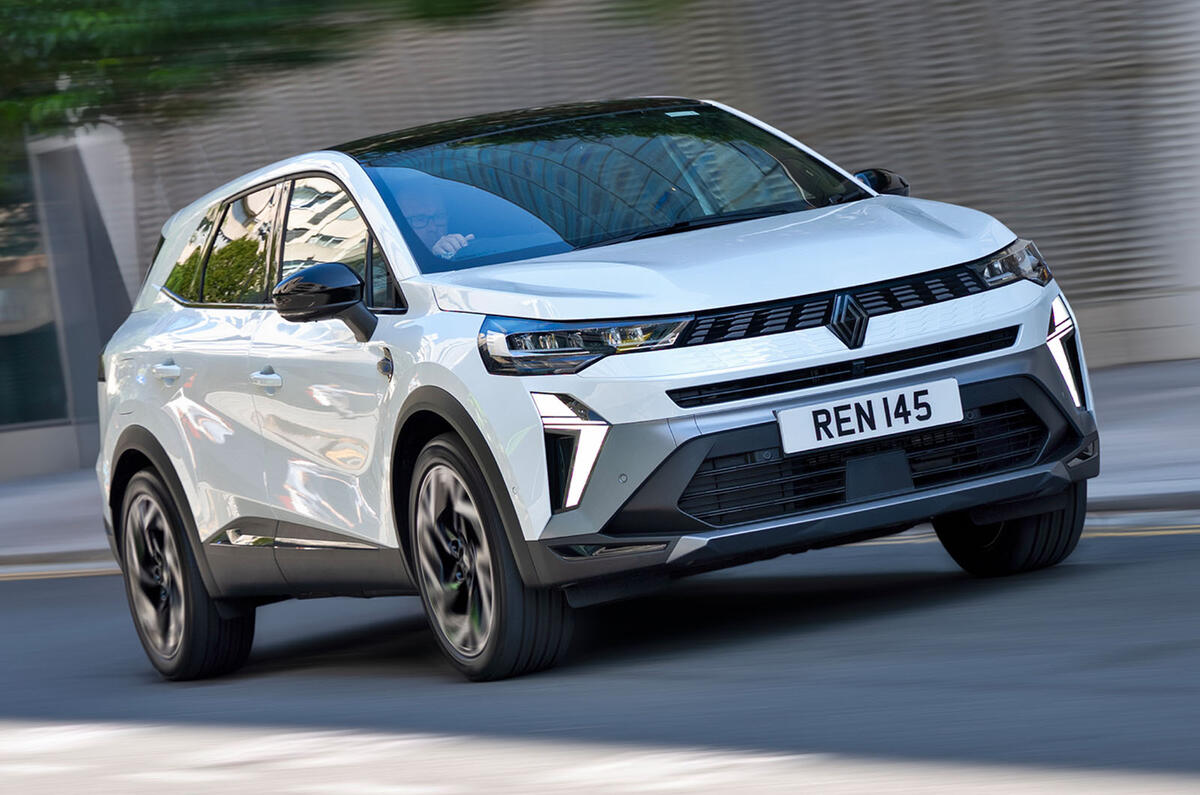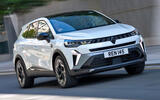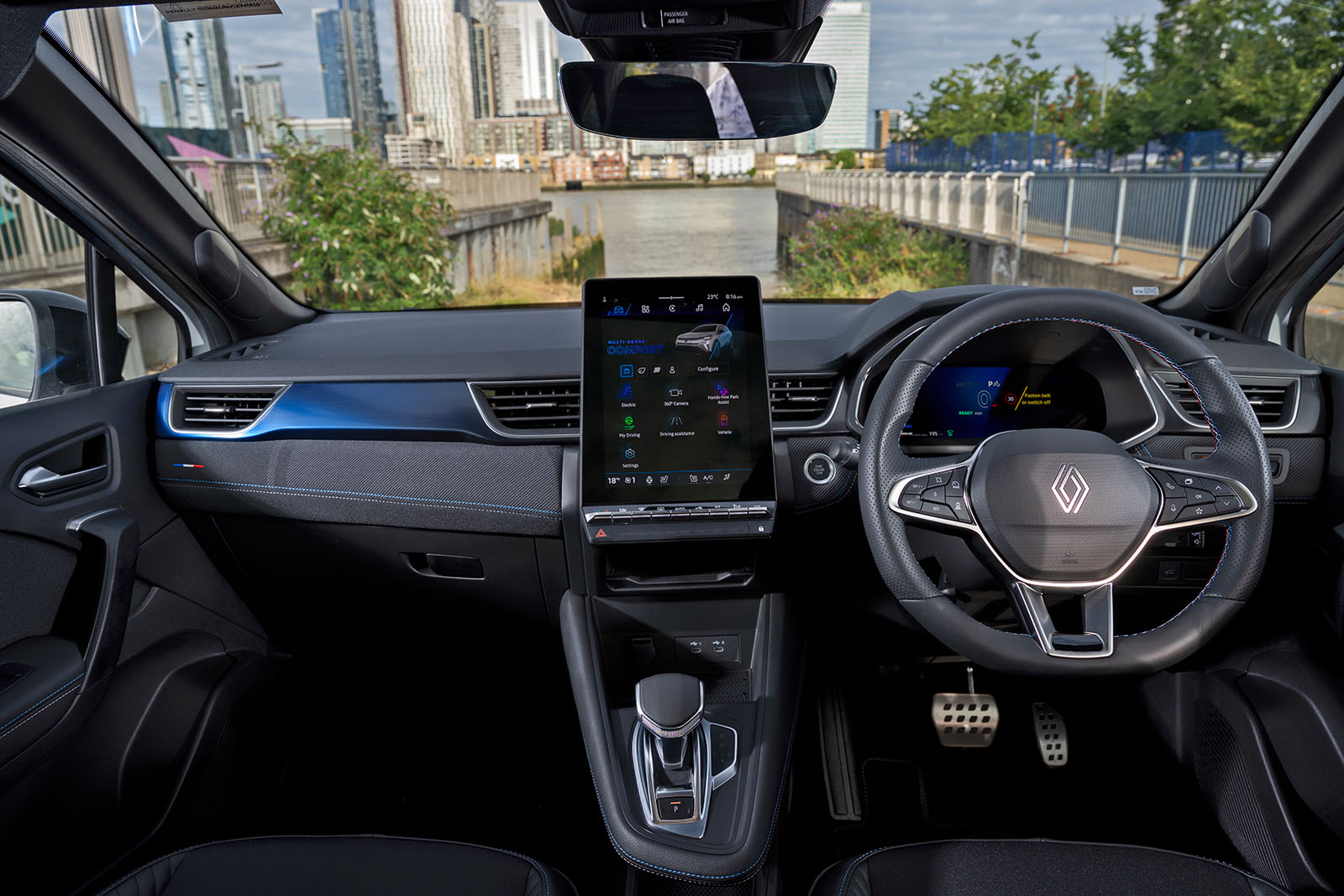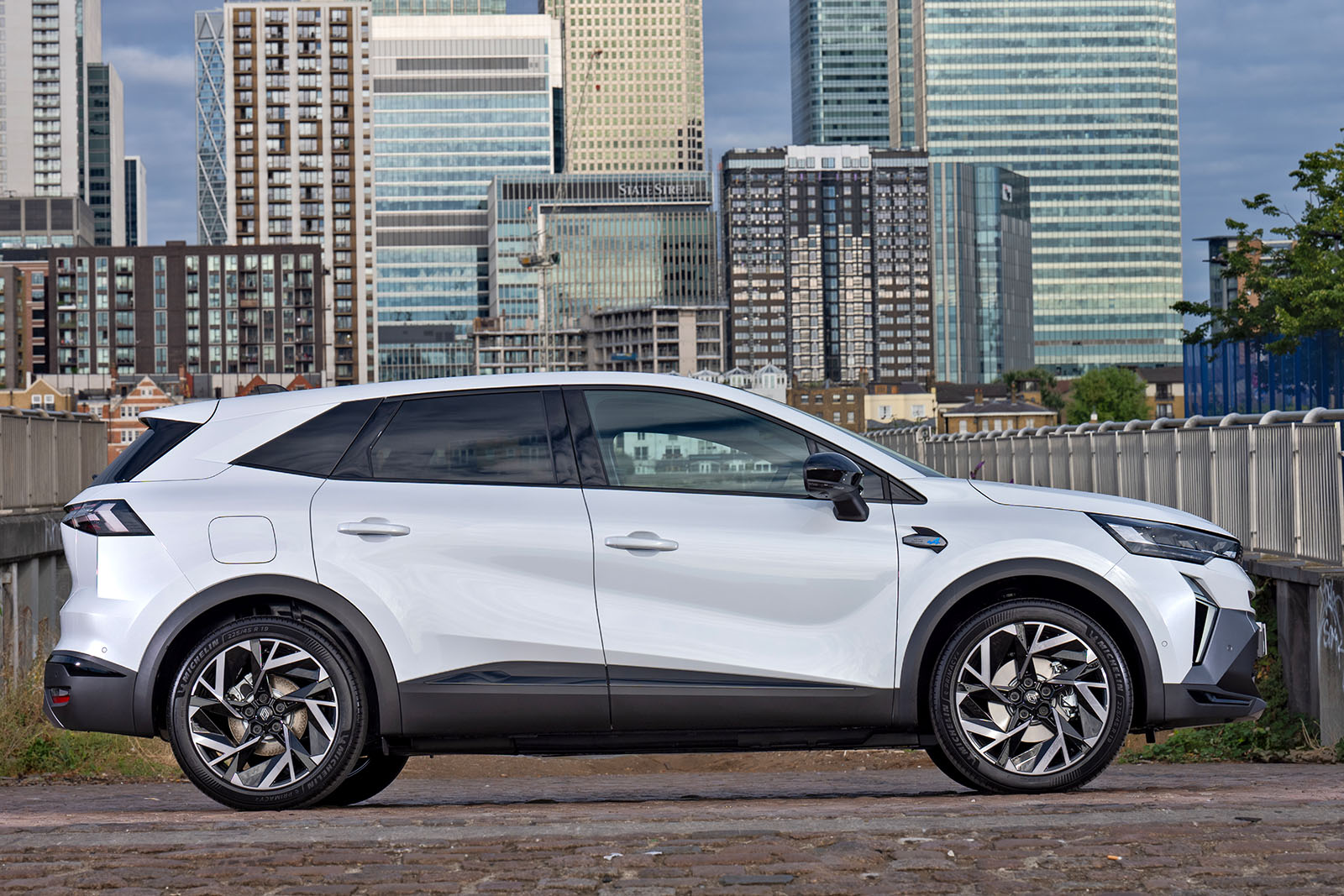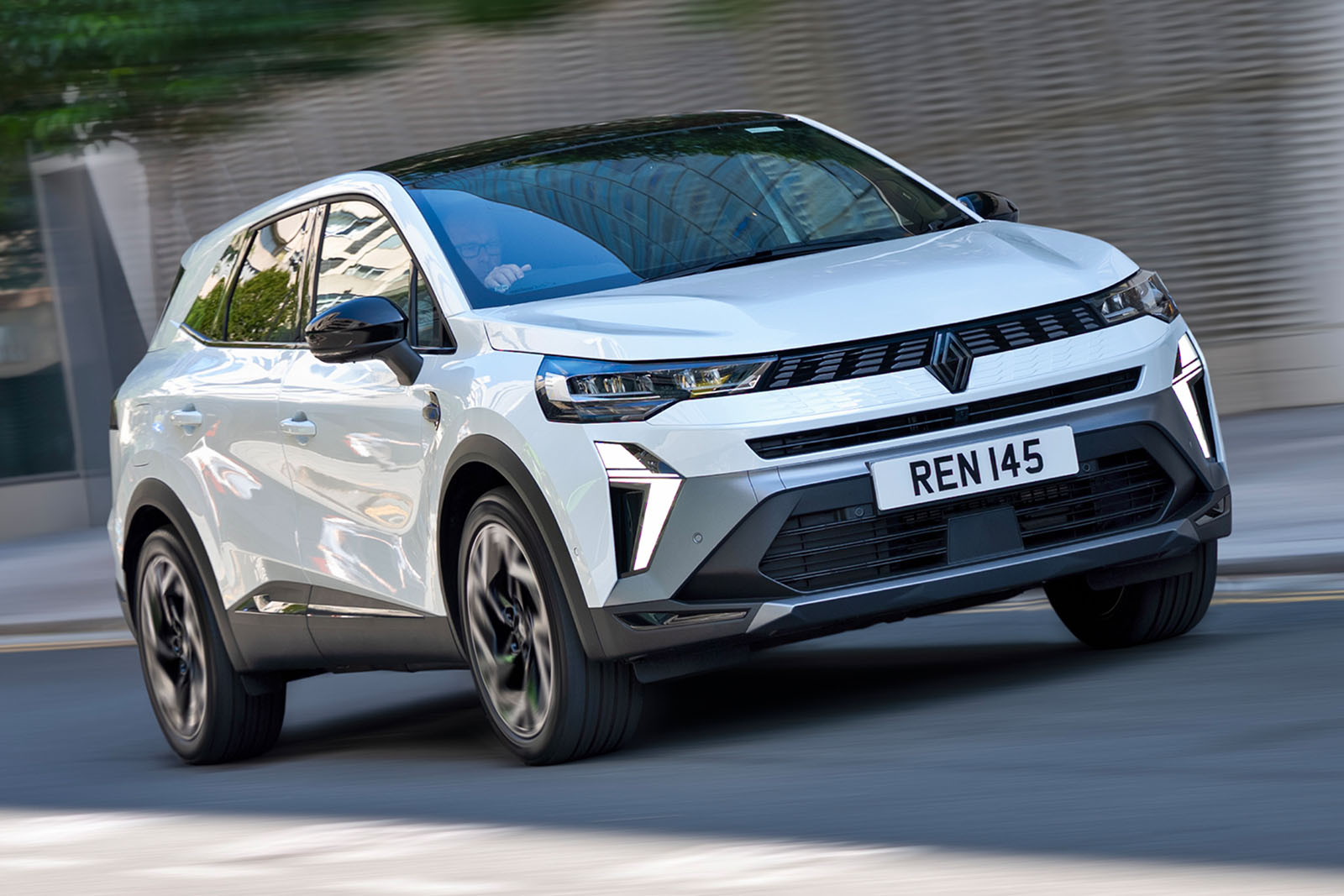Renault makes much of the Symbioz's interior versatility, although in that respect it’s hardly segment-leading; you might even find yourself slightly short-changed.
Second-row passenger space is just about appropriate for full-size adults but is no great selling point in itself. The Skoda Kamiq offers just as much while the Skoda Karoq, with its optional removable back seats, knocks the Symbioz for six on outright carrying space.
What's more, if the car is fitted with Renault's optional Solarbay panoramic roof, which uses electrically charged liquid crystals to block out the sun as and when needed, six-footers will struggle for head room.
Renault does at least include a sliding back seat to boost boot space, but it moves only as one fixed bench, so it’s a bit awkward to heave fore and aft.
With the seats slid all the way back, you create 492 litres of boot space, which is 12 litres less than in the Qashqai and nearly 100 litres less than in the Sportage. If you slide the bench forwards, capacity is increased to 624 litres – but a sizeable gap is left in the loadbay floor, primed and ready to swallow up and snag smaller items. With the rear bench folded, space stands at a generous 1582 litres.
The boot itself is usefully large and deep by class standards, with an adjustable-height floor, but it doesn't possess any features aside from this; items like a 12V socket are absent.
Up front, the driver’s seat is comfortable enough (although it lacks cushion adjustment options) and the control layout and displays are simple and sensible. Renault’s chunky transmission selector is a practical size and easy to grab without looking.
One gripe we have with driving position, however, is that because of the thick A, B and C pillars, visibility is poor with regard to blindspots, while the small rear window means you have to rely on the low-definition reversing camera when manoeuvring.
Renault’s Google-based Open R portrait-style infotainment system is easy to find your way around, with lots of app-based functionality best connected for those with Android-based smartphones. Renault claims the system can download more than 50 apps.
The digital driver's display, meanwhile, is clear and easy to read and has a decent amount of configurability, but switching between displays prompts a needlessly complex animation that can begin to lag after a while.
It does at least have a row of physical controls for the HVAC functions, which feel reassuringly sturdy, and the audio volume can be adjusted with a handy steering wheel-mounted stalk.
The car’s ADAS (it offers up to 24 of them, Renault proudly crows, between speed-limit buzzers, lane-keeping assistants, intelligent cruise control etc) are mercifully easy to neuter via a fixed physical shortcut button adjacent to the steering wheel.





